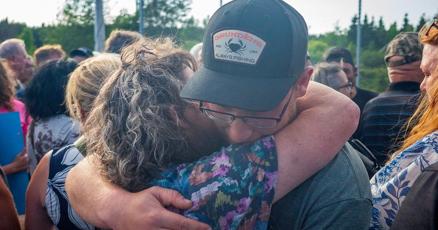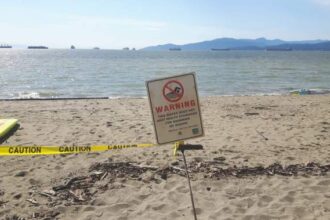In the unforgiving waters of the North Atlantic, where danger is as constant as the horizon, seven Newfoundland fishermen defied extraordinary odds in a survival story that has become part of the province’s maritime legacy. Now, nearly three decades after their miraculous rescue, a commemorative plaque stands as a testament to human resilience and the unwavering spirit of those who make their living from the sea.
The fishermen, now known collectively as the “Lucky 7,” set out from their coastal community in September 1995 for what was supposed to be a routine fishing expedition. When their 50-foot vessel encountered catastrophic mechanical failures during a sudden storm, they found themselves adrift in one of the most perilous stretches of ocean on the planet.
“We had no radio, no flares, and barely enough supplies to last a day,” recalled John Parsons, one of the survivors, during yesterday’s plaque unveiling ceremony in St. John’s. “After the third day, I remember thinking we might never see land again.”
For seven harrowing days, the crew battled hypothermia, dehydration, and the psychological torment of uncertainty. As search efforts expanded along the eastern seaboard, families onshore maintained vigils while hope diminished with each passing hour.
Their eventual rescue came when the cargo vessel Northern Voyager spotted their makeshift distress signals – strips of bright fishing gear tied to makeshift poles – approximately 230 kilometers northeast of their intended location. Medical professionals later confirmed that the men would likely not have survived another 48 hours at sea.
“This plaque isn’t just about seven men who got lucky,” said Newfoundland and Labrador Premier Andrew Furey at the ceremony. “It’s about the resilience embedded in our coastal communities, where the relationship with the sea is both livelihood and constant threat.”
The memorial, situated near the St. John’s harbourfront, features engravings of the seven men alongside details of their ordeal. Local maritime historians have noted that the Lucky 7 incident has become an essential component of safety training for fishermen throughout Atlantic Canada.
“Before GPS was common on smaller vessels, before emergency locator beacons were mandatory, these men survived on ingenuity and determination,” explained Dr. Martha Reynolds, marine historian at Memorial University. “Their experience directly influenced maritime safety regulations that have since saved countless lives.”
The survivors, now mostly retired from fishing, expressed mixed emotions at seeing their ordeal memorialized. “It’s strange to see your worst nightmare turned into something people will read about for years to come,” said Thomas O’Brien, the vessel’s captain. “But if it reminds even one young fisher to take extra precautions, then it’s worth it.”
The ceremony also recognized the search and rescue personnel who coordinated the massive effort to locate the missing vessel, underscoring the complex logistics involved in maritime emergencies.
For coastal communities across Newfoundland, the Lucky 7 story represents more than just a spectacular rescue. It embodies the precarious relationship between islanders and the ocean – a relationship built on respect, risk, and an understanding that the sea gives life as readily as it threatens it.
As visitors stop to read the newly installed plaque in the coming years, one question will inevitably arise: In an age of advanced technology and sophisticated rescue capabilities, how many modern seafarers would possess the raw survival skills that kept seven ordinary fishermen alive against impossible odds?










